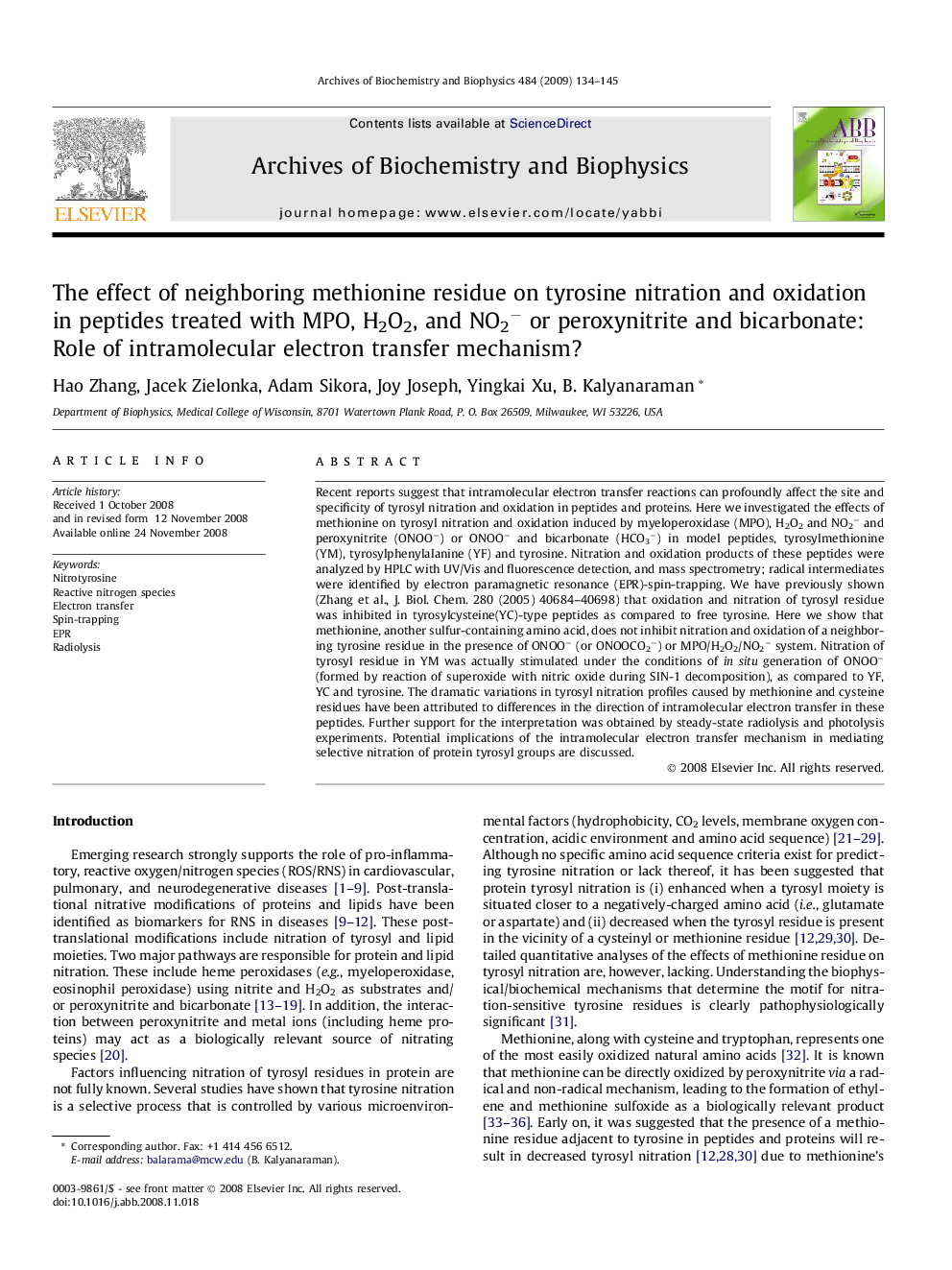| کد مقاله | کد نشریه | سال انتشار | مقاله انگلیسی | نسخه تمام متن |
|---|---|---|---|---|
| 1926515 | 1536458 | 2009 | 12 صفحه PDF | دانلود رایگان |

Recent reports suggest that intramolecular electron transfer reactions can profoundly affect the site and specificity of tyrosyl nitration and oxidation in peptides and proteins. Here we investigated the effects of methionine on tyrosyl nitration and oxidation induced by myeloperoxidase (MPO), H2O2 and NO2− and peroxynitrite (ONOO−) or ONOO− and bicarbonate (HCO3−) in model peptides, tyrosylmethionine (YM), tyrosylphenylalanine (YF) and tyrosine. Nitration and oxidation products of these peptides were analyzed by HPLC with UV/Vis and fluorescence detection, and mass spectrometry; radical intermediates were identified by electron paramagnetic resonance (EPR)-spin-trapping. We have previously shown (Zhang et al., J. Biol. Chem. 280 (2005) 40684–40698) that oxidation and nitration of tyrosyl residue was inhibited in tyrosylcysteine(YC)-type peptides as compared to free tyrosine. Here we show that methionine, another sulfur-containing amino acid, does not inhibit nitration and oxidation of a neighboring tyrosine residue in the presence of ONOO− (or ONOOCO2−) or MPO/H2O2/NO2− system. Nitration of tyrosyl residue in YM was actually stimulated under the conditions of in situ generation of ONOO− (formed by reaction of superoxide with nitric oxide during SIN-1 decomposition), as compared to YF, YC and tyrosine. The dramatic variations in tyrosyl nitration profiles caused by methionine and cysteine residues have been attributed to differences in the direction of intramolecular electron transfer in these peptides. Further support for the interpretation was obtained by steady-state radiolysis and photolysis experiments. Potential implications of the intramolecular electron transfer mechanism in mediating selective nitration of protein tyrosyl groups are discussed.
Journal: Archives of Biochemistry and Biophysics - Volume 484, Issue 2, 15 April 2009, Pages 134–145